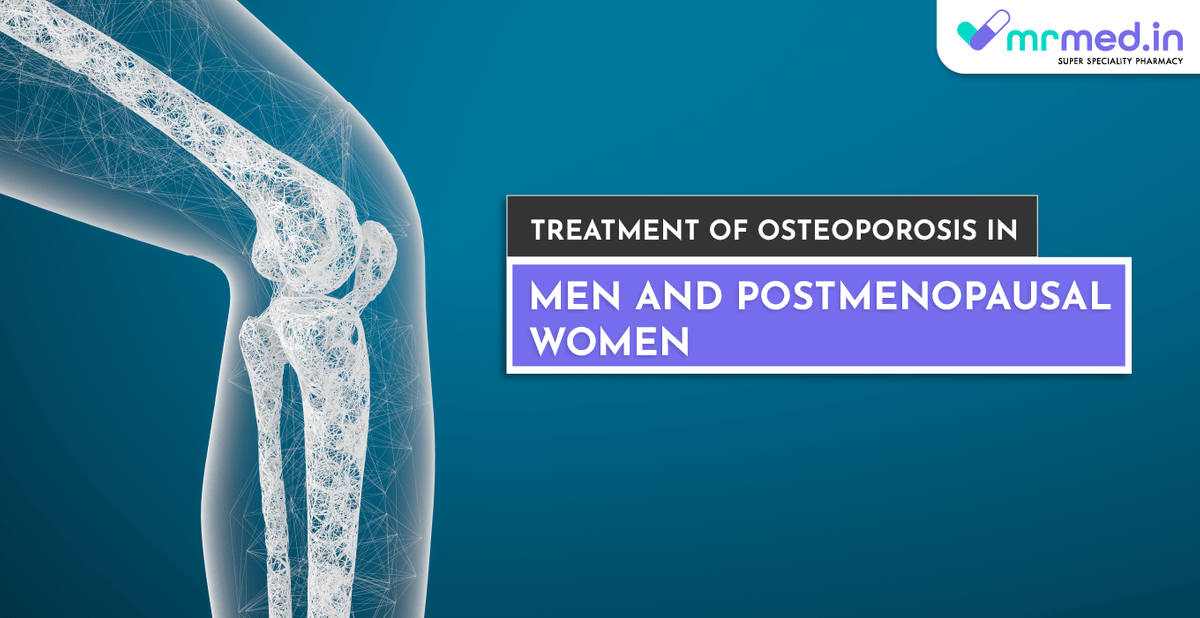Osteoporosis is a condition characterized by a loss of bone density and an increased risk of fractures. Treating osteoporosis in both men and postmenopausal women involves a combination of lifestyle modifications and medications. While it is more common in postmenopausal women, men can also develop osteoporosis, especially as they age.

Here are some commonly used approaches for treating osteoporosis in men and postmenopausal women:
- Calcium and Vitamin D: Sufficient calcium intake is essential for preserving bone health. It is recommended that adults consume 1 to 1.2 grams of calcium every day along with 800 to 1,000 IU of vitamin D. Vitamin D can be obtained by getting exposure to sunlight and consuming calcium-rich foods like fatty fish and fortified dairy products. In cases of insufficient dietary intake, supplements may be advised.
- Medications: Several medications are available to treat osteoporosis. The most commonly prescribed medications include:
a. Bisphosphonates: Bisphosphonates are medications that help slow down bone loss and reduce the risk of fractures. They work by inhibiting bone breakdown and promoting bone formation.
b. Selective Estrogen Receptor Modulators (SERMs): Medications like raloxifene mimic the effects of estrogen on bones, reducing bone loss and fracture risk.
c. Teriparatide: This medication is a synthetic form of parathyroid hormone (PTH) that stimulates new bone formation. It is usually prescribed for individuals at high risk of fractures or those who have not responded well to other treatments.
d. Denosumab: This injectable medication inhibits the activity of cells that break down bone, thereby reducing bone loss and fracture risk. Olimab 60mg Injection consists of the active ingredient Denosumab is a medication used to treat osteoporosis. It works by increasing the bone density. - Hormone Replacement Therapy (HRT): For postmenopausal women, estrogen therapy may be considered to help prevent bone loss and fractures. However, the use of HRT is carefully evaluated on an individual basis, weighing the risks and benefits.
- Fall prevention: Minimising the risk of falls is crucial to prevent fractures in individuals with osteoporosis. Strategies may include removing hazards at home, ensuring good lighting, using assistive devices, and participating in balance training programs.
- Lifestyle Modifications: Along with medication, lifestyle modifications are important for managing osteoporosis. These include regular weight-bearing exercises, avoiding tobacco and excessive alcohol consumption, and ensuring a balanced diet rich in calcium and vitamin D.
It's important to note that treatment plans for osteoporosis should be individualized based on factors such as age, sex, fracture risk, and overall health. Consulting with a healthcare professional, such as an endocrinologist or rheumatologist, is recommended to determine the most appropriate treatment options for an individual's specific situation.
